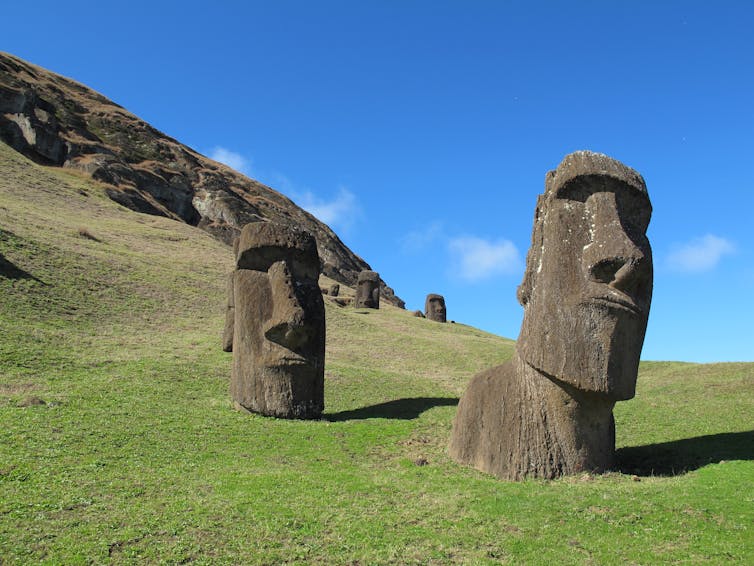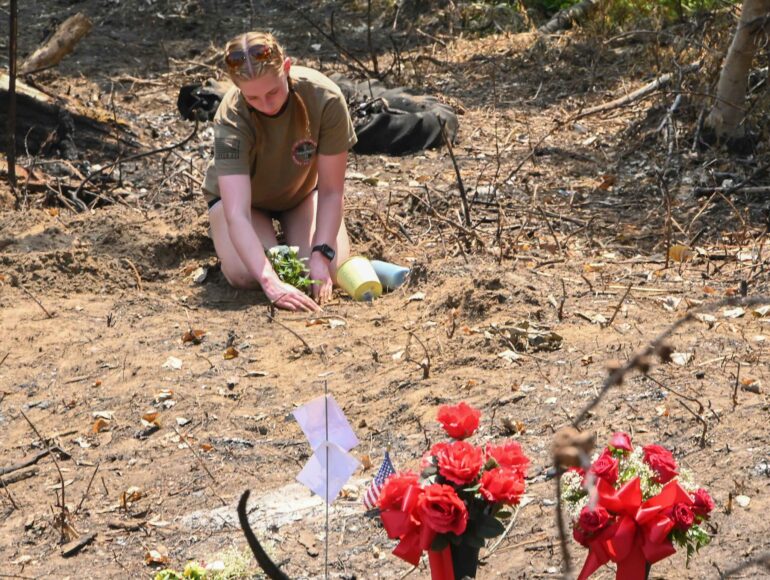Conventional wisdom holds that the island of Rapa Nui, also known as Easter Island, once had a large population that crashed after living beyond its means and stripping the island of resources. A new research study my colleagues and I conducted has struck another blow to this notion by using artificial intelligence to analyze satellite data about piles of rocks on this tiny island in the middle of the Pacific Ocean.
Our study looked at rock gardens, a form of subsistence farming, and determined that the island – just 15.3 miles (24.6 km) long by 7.6 miles (12.3 km) at its widest point – likely never held many more than the 3,000 or so people European explorers encountered in 1722.
The conventional wisdom grew out of speculation about another set of stone structures on the island: the iconic massive statues, called moai, that ancestors of Rapanui people carved. The statues tower as high as a three-story building and weigh up to 70 tons. There are nearly 1,000 of them across the island.
For an archaeologist, the mystery of what led people to invest so much time and energy in building these colossal figures begs for an explanation. For the past 24 years, my colleagues and I have been searching for one.
Some of the earliest European visitors assumed that the island must have hosted a much larger population at one point to account for the number and magnitude of the moai. This assumption has been repeated for generations and forms the basis of a collapse narrative.
The collapse story holds that the island must have once had tens of thousands of inhabitants needed for the labor involved in carving and transporting the massive statues. Such a large population was not sustainable, and ultimately shortfalls in food resulted in starvation, warfare and even cannibalism. Consequently, the population plummeted to the meager numbers observed by the early European explorers.

Did it really take an excessively large population to carve and transport these giant stone statues centuries ago?
AP Photo/Karen Schwartz
In our previous studies of the island my colleagues and I asked ourselves, if there were so many people living on the island at some point before European arrival, where is the evidence? We undertook a new study to examine whether such a large population was possible, given how Rapanui people used rock gardens to grow much of their food. From our evaluation of the available data, our best estimate is that there were never more than 3,000 to 4,000 people, and they lived sustainably on the island.
What rocks say about farming
In this study, we examined the archaeological record of how the Rapanui used rock gardening to grow their main crop, the sweet potato. Rock gardening is a form of cultivation in which broken pieces of bedrock are added to the soil to enrich it. Extensive rock garden cultivation plots are found across the island and would have provided a critical food source augmented by…



